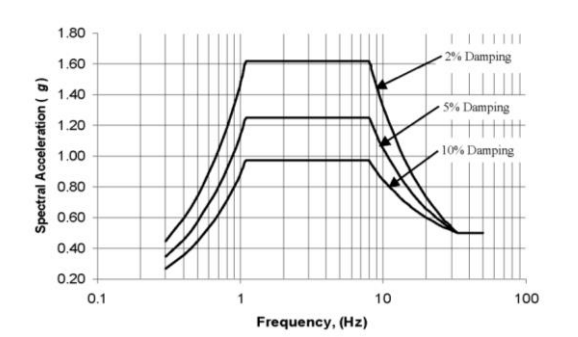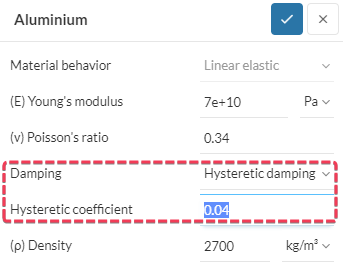Seismic analysis refers to the calculation of the behavior of a building or a structure in general, under earthquake loading. A common computational approach is to study the effect of the acceleration spectrum of an earthquake onto a structure.
This can be achieved in SimScale by utilizing the Base Excitation boundary condition in the Harmonic Analysis.
Typically, a structure has to comply with certain Seismic Standards, based on the application, which guarantee that it will perform acceptably under specific required response spectrums (Acceleration vs Frequency).
As an example, the IEEE 693-2005 standard, provides the following required response spectrum of acceleration. (Image Reference: Kotanidis, Christos & Palaiochorinou, Anastasia & Koch, Hermann. (2018). Overview of Major Seismic Standards for High Voltage Electrical Equipment. Proposal for Harmonization of IEC 62271-207 with IEEE 693. )

It is quite typical, in such analyses, to also account for damping. The damping can be applied via a damping ratio which in this case, stays constant through the the whole excitation frequency range. To apply constant damping you can use the Hysteretic Damping in the Material Properties.

In this example, a hysteretic damping coefficient of 0.04, will imply a damping ratio of 2% (damping ratio = hysteretic damp. coeff / 2)